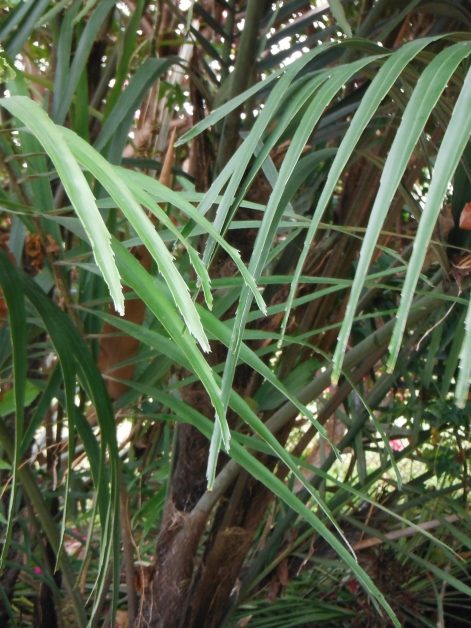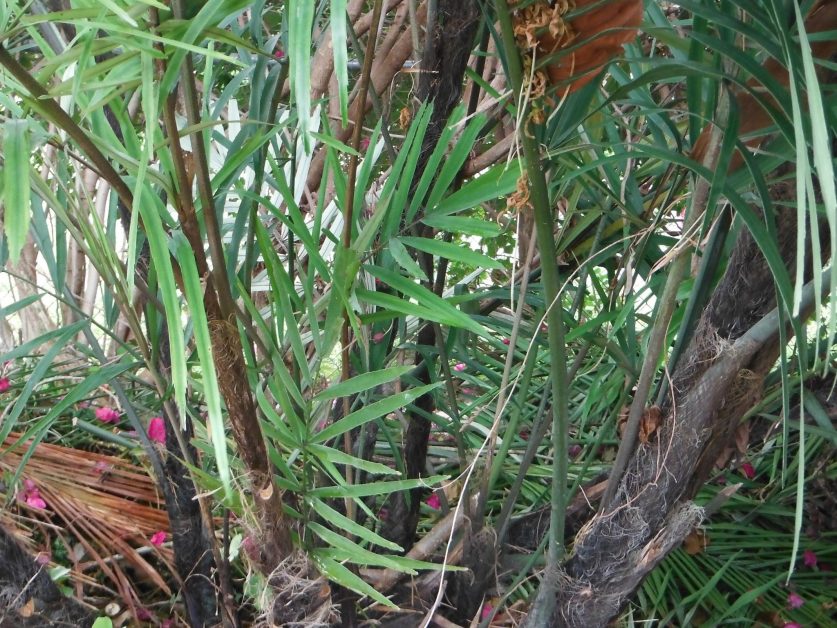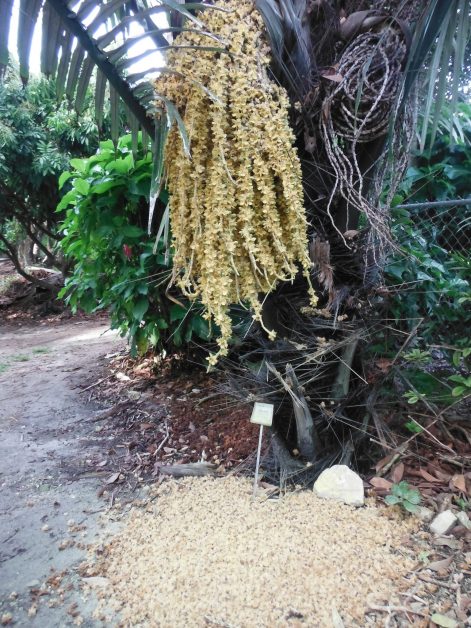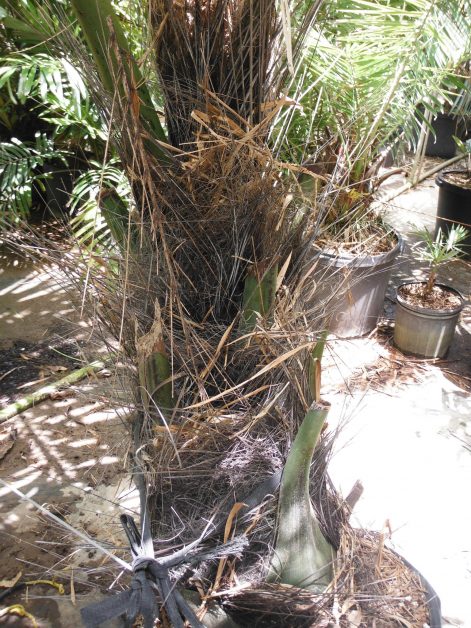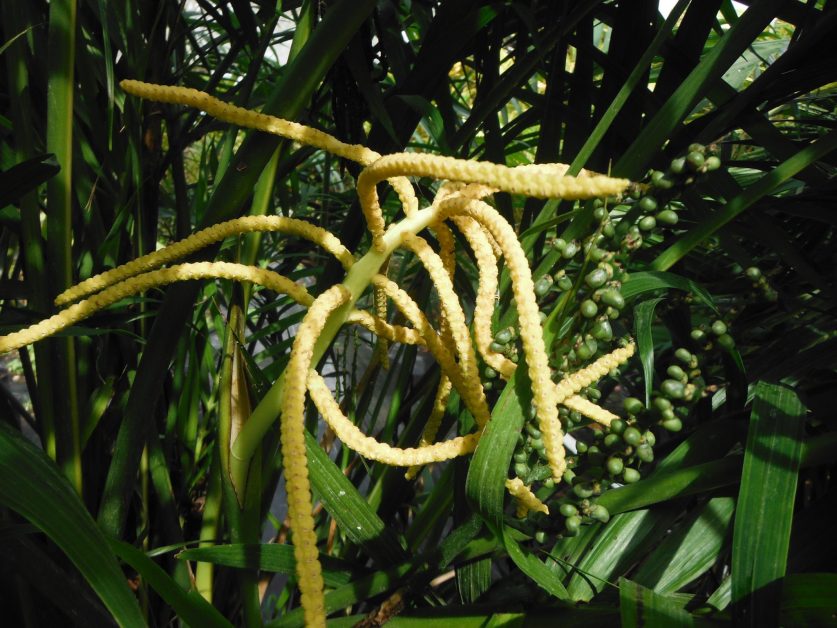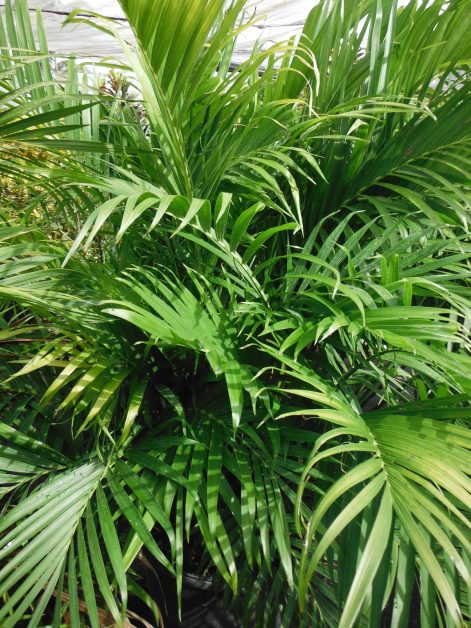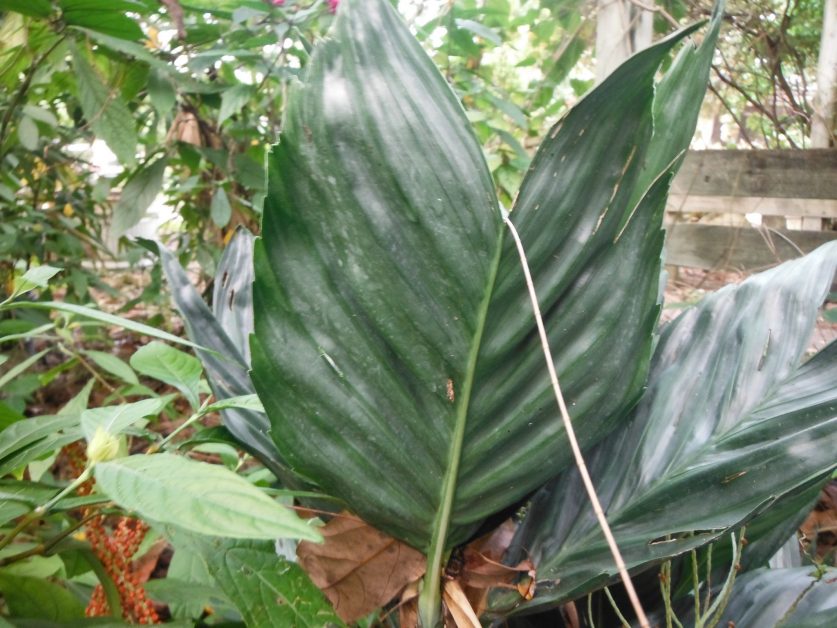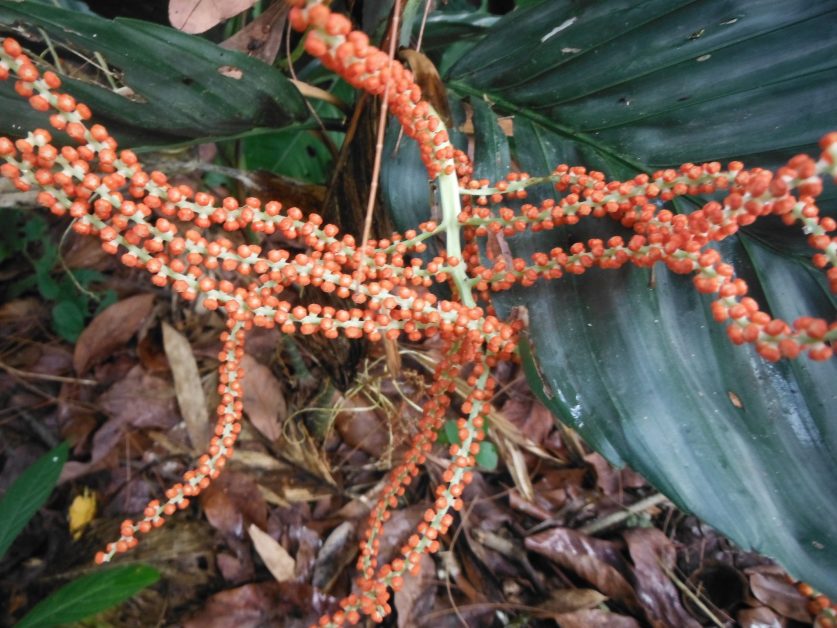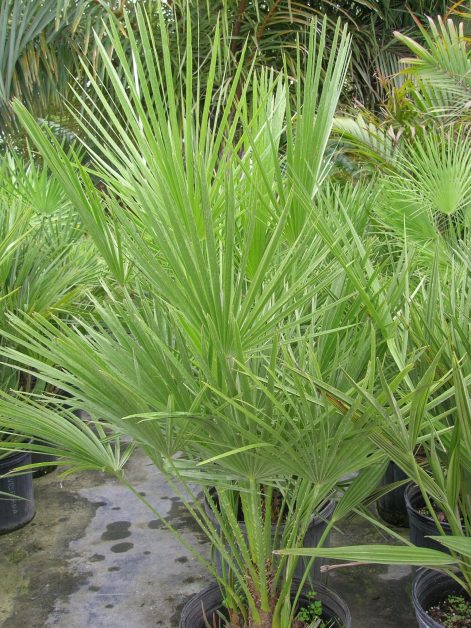Palms to Herald the Rainy Season
The rainy season is just around the corner. We know that in southern Florida May 20 marks the usual beginning of the rainiest part of the year, but why? Heat and humidity build throughout the spring until they reach the point of generating rainfall without the intervention of a cold front. The dew point is a key indicator in that process. It is the temperature at which air can no longer hold water vapor, so some of that moisture has to be condensed into liquid water. The closer the dew point approaches the air temperature, the higher the relative humidity becomes. For most people the summer “feel” begins to become unpleasant when the dew point exceeds 70 degrees on a regular basis. At the peak of summer, dew points often hit the upper 70s, and we begin to think fondly, even desperately, of a mountain vacation.
But the conditions that make humans miserable allow many tropical plants to achieve developmental nirvana. The next few weeks will present an excellent opportunity for you to introduce new plants into the landscape, allowing nitrogen-laden rains to promote good foliar and root growth for the next five months or so. Today Richard Lyons’ Nursery introduces the first in a series of articles on palms we recommend for your yard. Here are the first five species:
Arenga obtusifolia, a native of Indonesia and Malaysia, is a clumping pinnate (feather-leafed) species that reaches 20-30 ft. in southern Florida, and it thrives in wet conditions. Leaflets are dark green above and silvery-colored below. Plant in sun or light shade.
Arenga pinnata, the Sugar Palm, is native to tropical Asia. This single-trunked species loves sun and water, and will reach 30-40 ft. in our region. Trunked are wrapped in dense black fibers. Leaflet undersides are silvery.
Chamaedorea cataractarum, the Cat Palm, is native to Mexico, where, as the species name implies, it is closely associated with fast-moving streams. This clumping, trunkless palm reaches 6-8 ft. and performs well in light shade to sun.
Chamaedorea metallica is a distinctive-looking palm, bearing metallic blue-green, solid leaves on thin stems. Ultimate height is 6-8 ft. It should be grown in light to deep shade and provided with ample water. It is native to Mexico.
Chamaerops humilis, the European Fan Palm, the only palm species native to mainland Europe, doesn’t require tropical conditions to thrive, but still does well in our climate. It grows slowly to 10-12 ft. and is hardy to about 15 degrees. Plant in full sun in well-drained soil.
- Arenga obtusifolia (Lang Kap Palm)
- Arenga obtusifolia (Lang Kap Palm)
- Arenga pinnata (Solitary Sugar Palm)
- Arenga pinnata (Solitary Sugar Palm)
- Chamaedorea cataractarum (Cat Palm)
- Chamaedorea cataractarum (Cat Palm)
- Chamaedorea metallica (Metallic Palm)
- Chamaedorea metallica (Metallic Palm)
- Chamaerops humilis (European Fan Palm)
